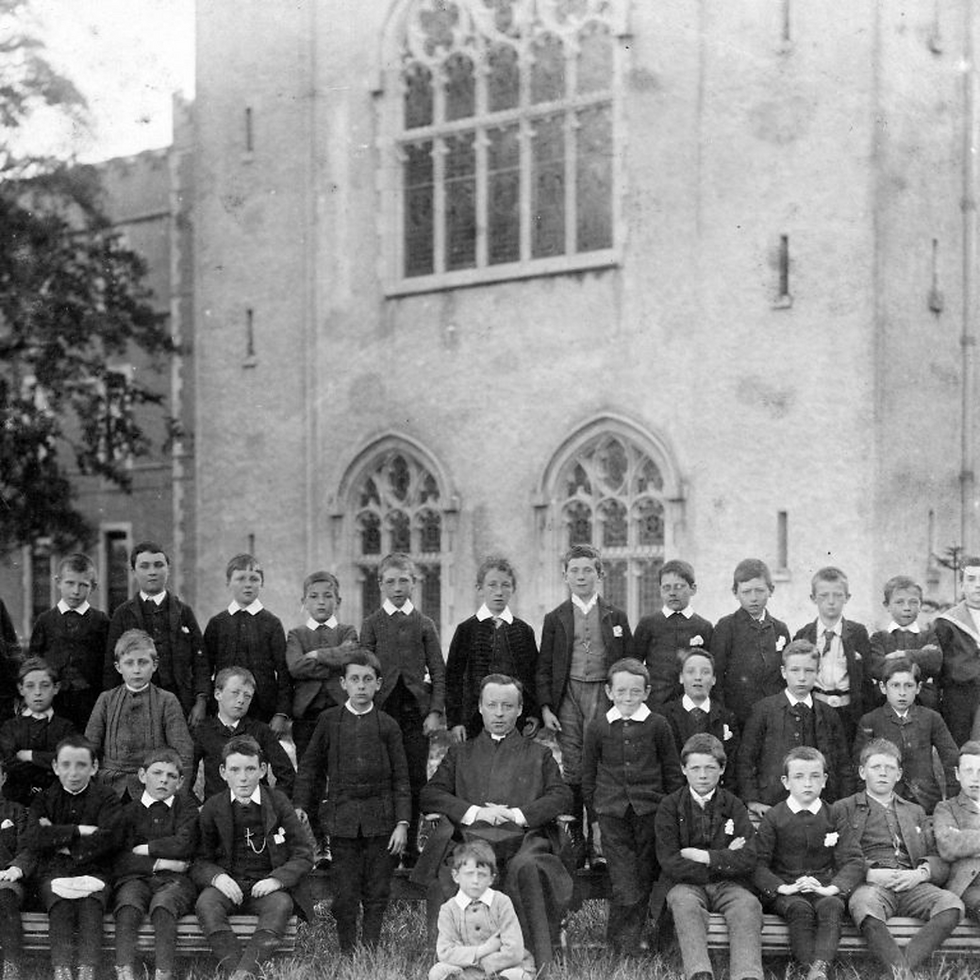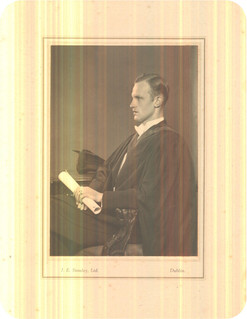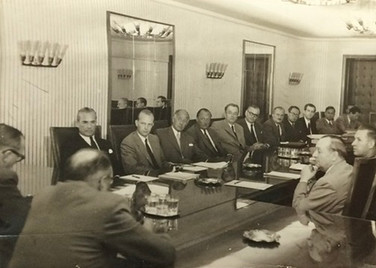James Joyce, Clongowes Wood College and our Family Connection
- Paul Dubsky
- Aug 12, 2024
- 3 min read
Updated: Jun 3

James Joyce's education at Clongowes Wood College, a prestigious Jesuit boarding school in County Kildare, Ireland, from 1888 to 1891, played a significant role in shaping his intellectual and spiritual development. This early education laid the groundwork for the themes of faith, identity, and rebellion that would permeate his later works.
Clongowes Wood College, founded in 1814, was known for its rigorous academic curriculum and Jesuit discipline. Joyce entered Clongowes at the age of six, a testament to his family's ambition and their desire for him to receive the best possible education. The Jesuit education at Clongowes was intended to mold boys into men of intellect and faith, instilling a deep sense of discipline and piety.
At Clongowes, Joyce was introduced to a classical education, which included Latin, Greek, and French, along with mathematics, history, and geography. This classical curriculum was crucial in developing his linguistic skills and fostering a love for literature that would later define his career.
Dubsky Family Connection

Clongowes also plays a pivotal role in my family's history: at the end of January 1939 aged seventeen, my grandfather Robert Dubsky, was evacuated from Vienna by his parents, who stayed behind, to escape the Nazi's and find safety at Clongowes Wood College, far from the impending War in Europe. His father, my great-grandfather, did not survive. He was murdered by the Nazi's in 1945. Robert was an only child - the last remaining Dubsky.
Robert sat the metric exam and passed with flying colours, despite speaking very little English when he arrived, though he excelled at Latin, German and French. That autumn he went on to study at University College Dublin, as Joyce had done in 1898.
Robert would go on to marry my grandmother, Mary Fionnuala O'Doherty. Their wedding was on June 6th 1944, D-day, with dinner after the event in the Royal Hotel, Glendalough. They both went on to become successful entrepreneurs, rally driving partners, and parents to four children: Robert, Caroline, Susan and Paul (my father). Robert co-founded the Irish-Austrian Society and at one point was the Austrian Trade Delegate to Ireland.
My father, Paul snr., and uncle Robert, also attended Clongowes. In 1996 aged seventeen, my parents gave me a choice: apply for Clongowes or take over the family business in Prague. I stayed in Prague. The same year my father became the first Development Officer of CWC, responsible for reaching out to Old Clongownians and raising funds for the new buildings. He did this for two and a half years.
Many relations on my grandmother’s side of the family also attended Clongowes, including Paddy Hopkirk, who together with Alan Hutcheson won their class in the 1963 Le Mans 24 Hours in an MGB, despite being delayed by 90 minutes whilst digging their car out of a sandbank. Most famously he won the 1964 Monte Carlo Rally in a Mini Cooper S, number 37.
Other notable Old Clongownians include John Redmond (Politician), Michael O'Leary (Businessman), Pádraig Pearse (Teacher, Barrister, Poet, Revolutionary), John Bruton (Politician), Kevin O'Higgins (Politician), John McCormack (Tenor), Domhnall Gleeson (Actor and Writer), Arthur Cox (Lawyer) and Oliver St. John Gogarty (Poet, Surgeon, Politician) -- AKA "stately, plump Buck Mulligan" in Ulysses.
We owe a great debt to Clongowes Wood College. Our Dubsky family lineage very nearly came to an end, were it not for the safe haven granted to my grandfather. Today we are a spralling family with aunts and uncles, nieces and nephews, children and grandchildren, dispersed throughout Europe, in Wexford, Wicklow, Crowthorne, Galicia, Vienna, Berlin, Prague, The Hague, Verden and beyond.
A Clongownian Oak Monument to Joyce
In 2022, on the centenary of the first publication of Ulysses, we collected hundreds of acorns from the three oak trees situated between the tennis courts, cricket and rugby pitches at Clongowes. They have since grown into magnificent little oak saplings, nurtured by my parents, Paul and Karin, at their home in Ballymoney, Co. Wexford. We intend on planting them in the shape of Joyce's glasses - as an oak monument - once they mature to strong young trees. More on this later!

Welcome to the journey.



















Comments